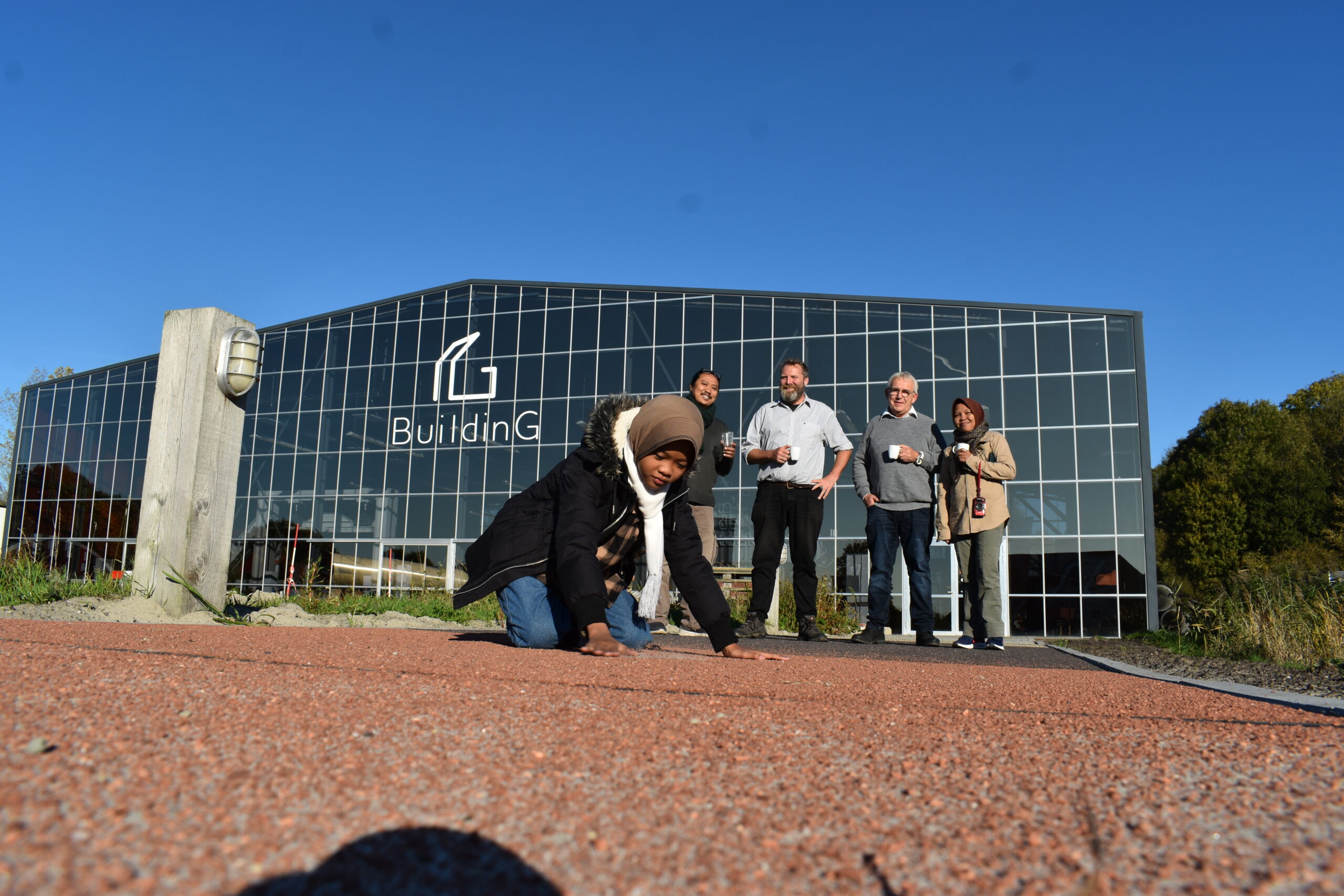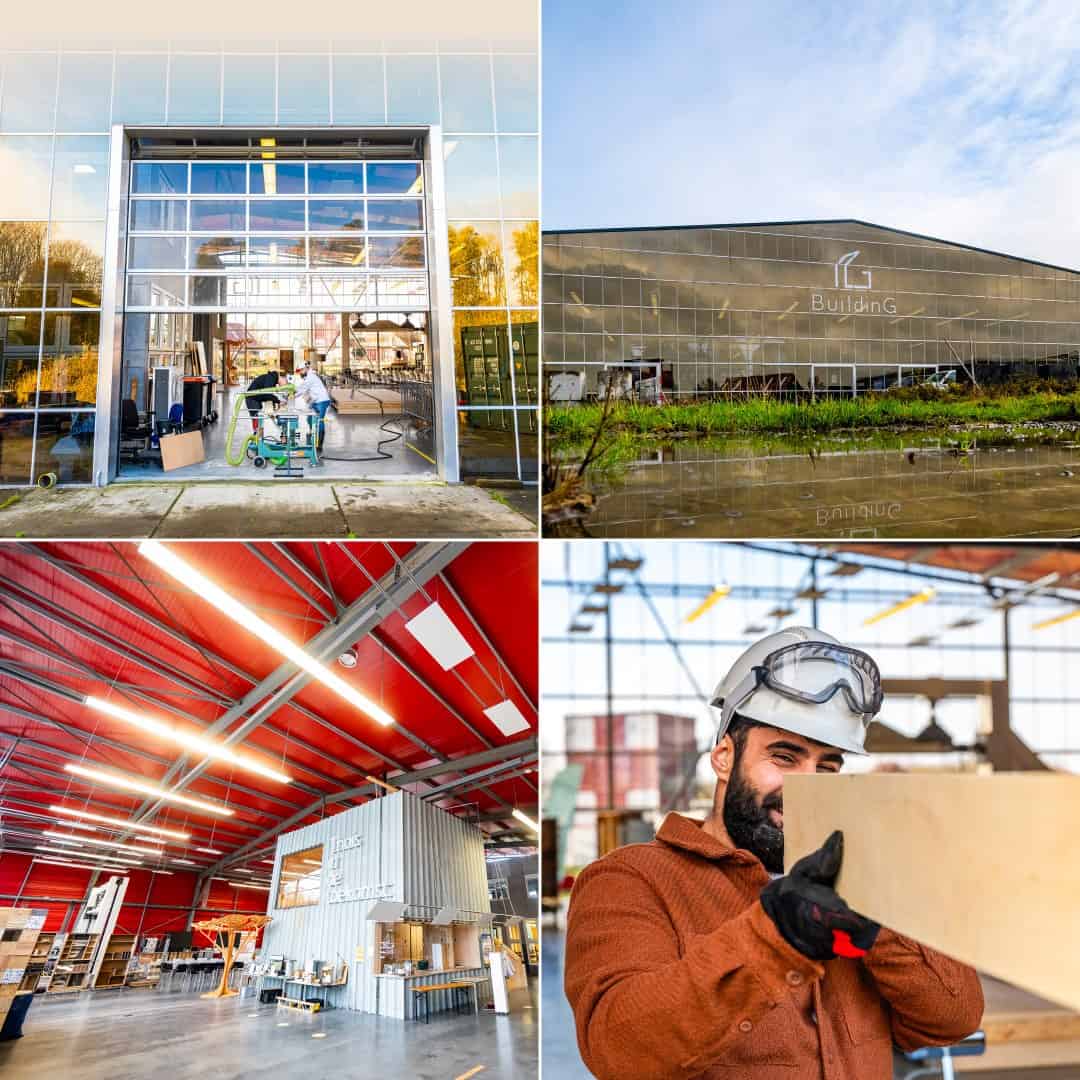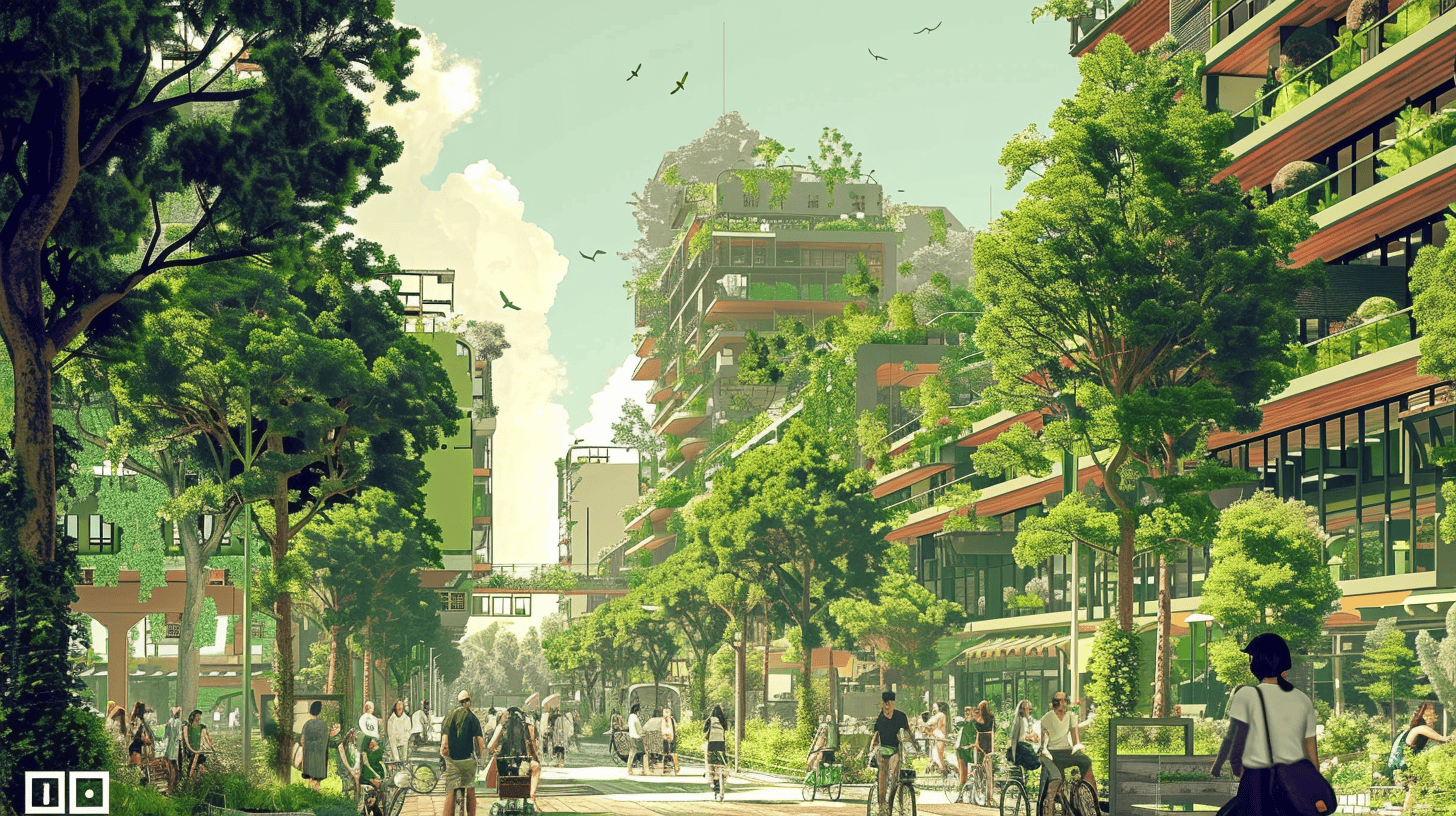
It’s almost time for the Let’s Gro Festival in Groningen, The Netherlands! During the weekend of 5, 6 and 7 November, everyone can learn more about the future ideas for the city through fun activities. Climate-proof construction is also part of the future, and visitors can take a look at the climate testing ground on the Zerniketerrein. From water walls to plastic roads: the site is full of innovative constructions.
Seeing is believing: that is an important motto of BuildinG‘s testing ground on the Zernike Campus in Groningen. During their tour of the grounds, visitors will have the opportunity to become acquainted with the world of tomorrow. The site, where researchers and students from the Hanze University of Applied Sciences and the University of Groningen are joining forces to explore innovative solutions, is full of applications to make homes and roads more resistant to global warming. The sustainability aspect is high on the agenda: all of the structures are made of circular materials and plastic is also reused.

In the testing ground there is, among other things, a water wall: a vertical pipe system for the storage of rainwater. By combining the pipes with climbing plants, they form part of a nice, natural living environment. “This is a creative answer to flooding,” says Floris Boogaard, lecturer in Spatial Transformations at the Hanze University of Applied Sciences and involved with the testing ground.” The water can then be reused in dry periods. Also, the water can be used to cool urban areas.” There is also a ‘plastic road’ in the living lab, made out of recycled plastic. “The reservoir under the road surface is made of waste plastic where water is collected and stored during a rainstorm. This water can then be reused.” There are also plastic balls under the ground, made from old garden chairs or beer crates. “See it as a big ball bin, which helps ensure that water is stored and gradually infiltrates into the subsoil.”

Some of the innovations from the testing ground are relatively new, experimental and sometimes as young as a year old. “Not everything we have there has been thoroughly researched yet. Take the water wall, for example: what happens to the water quality? Often answers to questions like that still need to be found. So the testing ground is the ideal place to research the myriad of applications.”
Involving the public
In Boogaard’s view, it is very important to involve the public in the new innovations around climate-proof construction. “People are bothered by a sense of trepidation. When people see with their own eyes that a truck can actually drive over a plastic road, it has a huge impact on them. I think that makes more sense than just poring over reports on climate change.”
Interest from abroad
It is not only in the Netherlands that there is interest in the testing ground. This week, Boogaard received a visit from an Indonesian delegation. This included Prigi Arisandi who got a local Indonesian movement going to prevent industrial pollution from flowing into the Surabaya River which supplies three million people with drinking water. This won him the Goldman Award that former President Obama of the United States presented. During the visit to the testing ground, the main focus was on plastic pollution and circular construction. “The recycling of plastic in Indonesia really still needs to gain momentum. In the testing ground, I showed the delegation what is achievable in that area. They were very enthusiastic about the recycled balls as a solution for waste and climate adaptation but also wondered whether we were not releasing microplastics into the soil. We took samples right away to verify this. This is what a testing ground is all about, answering questions on the basis of research.”

A climate-adaptive future
Boogaard hopes to be able to contribute to accelerating climate-adaptive construction in the future by also inspiring provinces and municipalities in particular. “There are 101 solutions that can be thought up for climate-proof construction, that won’t be the problem.” But fair is fair: “Building these structures costs both space and money. But if you as a municipality do need to adapt a public space, because new pipes have to be laid after a few years, then look at whether climate-adaptive applications are possible. And I would suggest that they pay a visit to the testing ground. Then they will see that a lot is possible. I predict that over the next few years more and more innovative ideas will be applied in the Netherlands to protect us from heat stress, drought and flooding.”
Also read other stories about Groningen via this link.








